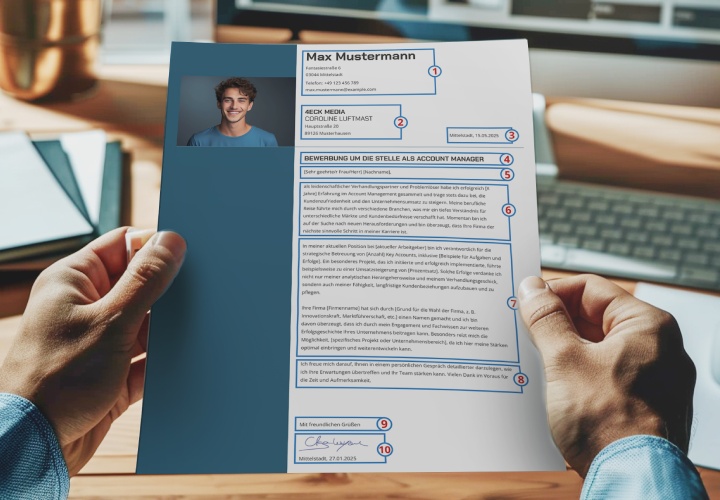Personalmanagement
Are you interested in Human Resources Management and everything related to it? Then you are in the right place. HR strategies and goals determine the orientation of personnel work in the company. The strategic approach of Human Resources Management connects the personnel goals with the company's goals. The HR department develops strategies for employee acquisition and development. Personnel managers implement measures to achieve goals and assess their effectiveness. A professional personnel strategy enables the systematic development of employees and ensures the long-term success of the company.
A true HR professional makes candidates think they found the company all by themselves
Human Resources Management: Right people, right time, right place
Introduction to Human Resources Management
Human Resources Management plays a central role in corporate governance. This function includes all processes and measures related to personnel in a company.
The term Human Resources describes employees as a valuable resource of the company. Human Resources takes over the systematic organization and management of all employee-related tasks. This department contributes to value creation and supports business goals through effective personnel strategies.
The main tasks of Human Resources Management include:
- Workforce planning and control
- Recruiting and personnel selection
- Employee care and development
- Compensation management
- Labor law and contract design
A professional HR management creates optimal conditions for employees and the company. The human resources department serves as a link between management and employees. It ensures the efficient use of human resources and promotes productivity.
Human Resources develops strategies to attract qualified employees. The HR department uses various instruments to identify and select suitable candidates. These processes significantly contribute to the success of the company.
Personnel Selection
Personnel selection is a structured process for identifying suitable candidates. The selection process is based on defined criteria and standardized methods. Professional personnel selection ensures the quality of personnel decisions and minimizes the risk of incorrect placements.
The systematic selection process begins with a thorough analysis of the application documents. The qualifications of the candidates are checked and matched with the job requirements. Professional experience and career progression play a key role in the initial assessment of suitability.
Interviews form the core of the selection process. Structured interviews allow for a targeted assessment of professional and personal suitability. HR professionals use behavior-based questions to assess the competencies and potential of the candidates. Through targeted conversation, they gain a comprehensive understanding of the candidates.
Assessment diagnostics complement the selection process with objective assessment tools. Personnel diagnostic tests provide additional insights into the skills and qualities of the candidates. Assessment centers allow for observations of behavior in simulated work situations. Work samples demonstrate the practical skills of the candidates.
Modern personnel selection utilizes competency models and standardized assessment forms. These tools ensure a systematic evaluation of all candidates. A selection matrix supports the comparison of different candidates. Potential analyses provide insights into the developmental opportunities of the candidates.
The quality of personnel selection is based on transparent decision criteria and traceable processes. Careful documentation of results ensures the professionalism of the process. Uniform evaluation standards guarantee the comparability of candidate assessments. The final selection decision is based on a comprehensive analysis of all findings and results in a well-founded recommendation.
Staff acquisition and recruiting
Staff recruitment is an essential part of HR management. Recruiting encompasses all activities to identify and approach suitable candidates for open positions. The methods of staff recruitment have evolved significantly due to digitalization.
Classic recruiting includes posting job advertisements, reviewing applications, and conducting interviews. The recruiting process allows for the systematic selection of suitable candidates based on defined job profiles.
Executive Search refers to a specialized form of recruitment for leadership positions. This method is particularly used in filling management positions. Executive Search specialists possess in-depth market knowledge and a well-established network.
Direct Search is a proactive method of staff recruitment. Recruiters approach potential candidates directly. This approach is suitable for targeted searches for specialized professionals and leaders with specific qualifications.
Headhunting is a specific form of Direct Search. Headhunters specialize in recruiting highly qualified professionals and managers for companies. They work with professional search methods and build long-term relationships with potential candidates.
Recruitment methods differ in terms of:
- Target audience and job profile
- Search strategy and approach
- Effort and costs
- Success rate
Choosing the appropriate recruitment method depends on the position and requirements. Professional staff recruitment requires a well-thought-out strategy and structured processes.
Leadership and Management
Leadership describes the ability to motivate people and align them towards common goals. The modern leadership approach goes beyond classical management. An effective leadership style is characterized by a combination of different leadership competencies.
The difference between management and leadership is evident in the approach. Management focuses on organizing and controlling processes and resources. Leadership, on the other hand, focuses on developing vision, inspiration, and motivating employees. Leaders must master both aspects to operate successfully.
Leadership strength is demonstrated through the ability to make clear decisions and enforce them. A strong leader provides guidance and security. Developing leadership strength requires continuous self-reflection and practical experience in leading teams.
Leadership competencies encompass a wide range of skills. These include communication skills, strategic thinking, and emotional intelligence. Strong social skills enable the establishment of trustful relationships with employees. The ability to delegate and manage conflicts influences leadership success.
Developing leadership competencies occurs through targeted training and practical leadership experience. Mentoring programs and leadership training support this process. Regular reflection on one's leadership behavior enables continuous improvement. Modern leaders adapt their leadership style to the needs of their employees and the requirements of the situation.






















